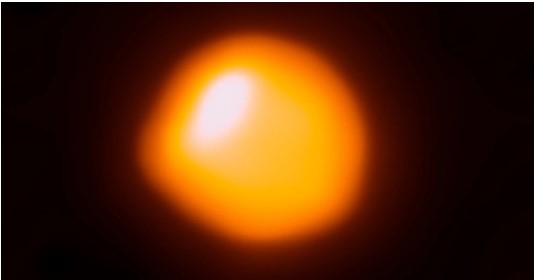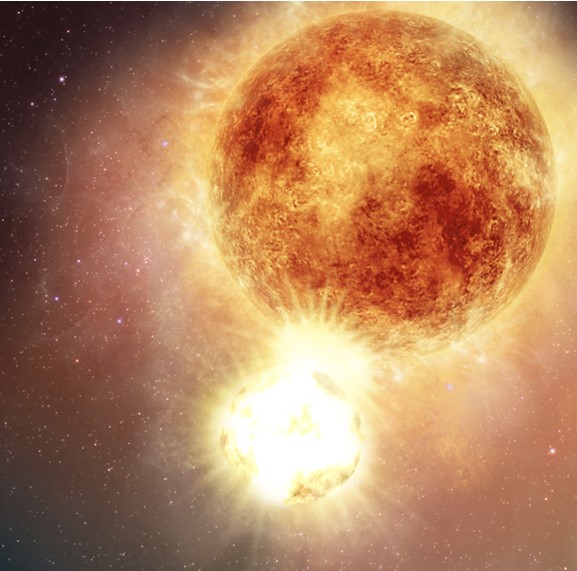In 2019, the Hubble Space Telescope captured stunning images of the red supergiant star “Betelgeuse” undergoing a Surface Mass Ejection(SME). Betelgeuse—one of the most prominent stars in the Milky Way, a part of the Orion Constellation. It literally “blew its top” , losing a considerable part of its mass. The cloud of dust and gases so raised managed to “dim” the light reaching us from the star.
The surprising part is that the star is behaving in a way which has never been observed by us before. The supergiant star’s well-chronicled 400-day pulsation rate is gone. The interior of the star is bouncing around like a raw egg when spun.” Data from Hubble and TRES suggest the outer layer may have recovered, but the surface is “bouncing like a plate of gelatin dessert as the photosphere rebuilds itself.”

The SME popped the top off of Betelgeuse, and recovery from something so devastating is a tough path. But the observations from a mix of sources from the STELLA Robotic Observatory to the Fred L. Whipple Observatory’s Tillinghast Reflector Echelle Spectrograph (TRES), and NASA’s Solar Terrestrial Relations Observatory spacecraft to the American Association of Variable Star Observers—coupled with the pivotal new data from Hubble, give insight into how an aging star loses mass as its nuclear fusion furnaces burn out.

Researchers now believe this event came from a convective plume more than a million miles across from deep inside the star. The shocks and pulsations blasted off a chunk of the photosphere, leaving a cool surface area under a cloud of dust. This fractured piece, several times heavier than the moon, dimmed the star so much the difference could be seen without a telescope.
But researchers feel that this explosion is not a “supernova” as the star is trying to compensate for its lost mass and is not exploding.

Betelgeuse is about 750 times the radius of our Sun and 530 light-years away, which is well beyond the 50 light-year “danger zone” for Earth if a nearby star does go supernova.